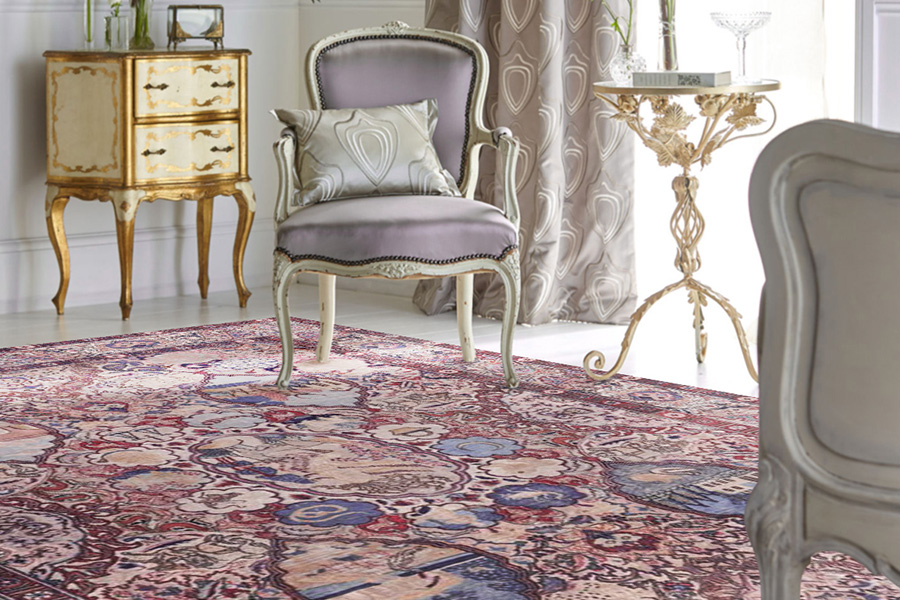The name of Kashmar recalls images of grapes and raisins, pomegranates, and saffron. It is an ancient town in the middle of the Khorasan region in the northeast of Iran. In addition to delicious souvenirs, Kashmar is also well-known for its exquisite Oriental rugs. This article will give you a brief insight into the delightful history and features of the enchanting Kashmar Rug.


Where is Kashmar?
In antiquity, Kashmar was renowned for the prophet Zoroaster’s cypress at the time of semi-mythological king Kavi Vishtaspa (kay-Gushtasp). And, as a token of the faith, he put on the prophet.
Kashmar maintained its holy position until AD 861, when the fanatical Caliph Al-Mutawakkil ordered the cutting down of the holy cypress. Al-Muntasir, the caliph’s son, killed him in the same year. That was the beginning of civil strife in Samarra.
Today Kashmar is a small town surrounded by orchards and vineyards and different types of raisins. The most important souvenirs of this city are wickers, Zilous, and high-grade rugs.



Technical Aspects and Structure of The Kashmar Rug
Kashmar rugs enjoy an open weave, and knots are asymmetrical (Persian). The pile is woolen with short to medium lengths. In Kashmar, rugs, warp, and weft consist of cotton. You could describe their entire structure as tight and firm but relatively flexible.
Rug sizes are favored more than area rugs due to the necessity of pictorial designs. And, this is the preference of the Iranian rug market.



Dyeing and Painting of The Kashmar Rug
Deep dark blue is the master key to recognize Kashmar rugs. It is the dominant color of the grounds of almost all Kashmar rugs — light blue or beige for margins.
For subsidiary colors, Kashmar rug weavers use light tones to offset the total dark blue appearance. These include shades of orange, crimson, bluish-red, light, medium greens, cream, beige, ivory, khaki, light blue, yellow, and buff. The fertile soil of the region provides herbal and mineral dye material.



Designs and Patterns of Kashmar Rugs
Kashmar has a reputation for Zirkhaki designs. This means literally “what one discovers from under the soil,” shortly: relics, including vases, pots, jars, pitchers, crocks, etc. These so-called Zirkhakis are the main motifs of the design and birds, animals, trees, and other plants.
Zirkhaki rugs have originated in Tabriz. Both prayer and medallion designs provide frames for designers. This is to fill with the motifs mentioned earlier and pictures of famous mosques or other historical buildings.
Among all, the majority of Kashmar rug weavers regard the Persepolis theme. That is because Iranians love to celebrate the reminiscence of the ancient Shahs of Persia. And this is so the ruins of Persepolis stand in the center of their attention.






Are you interested in the tasty delicacy of the Kashmar rug? Give a visit to our website or Louisville, KY Rug Store. You will be able to shop among the finest rugs we have gathered in our selection of 10,000 rugs. Our On-Approval policy gives you the option to make the final decision in your home.
That means you’re trying the rug in your room before buying it. Furthermore, with our White Glove Service, you wouldn’t have to lift a finger. Our expert team takes care of bringing the rug, putting the furniture aside, wiping the floor, and placing your rugs.
So don’t forget to give us a call for a consultation and more info on rugs.
Tel: 502-327-1499

